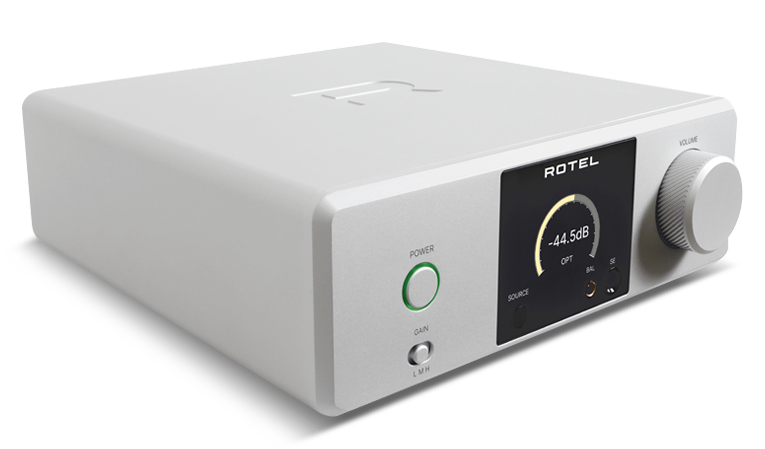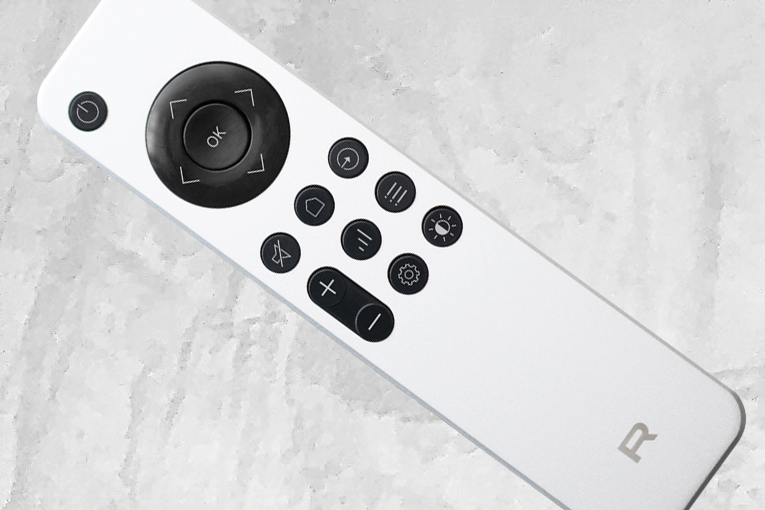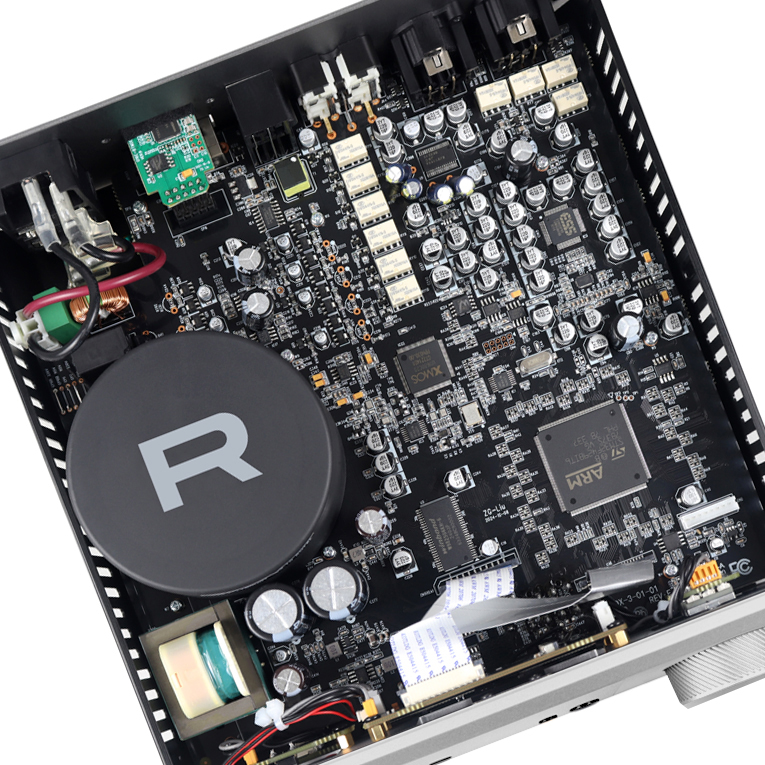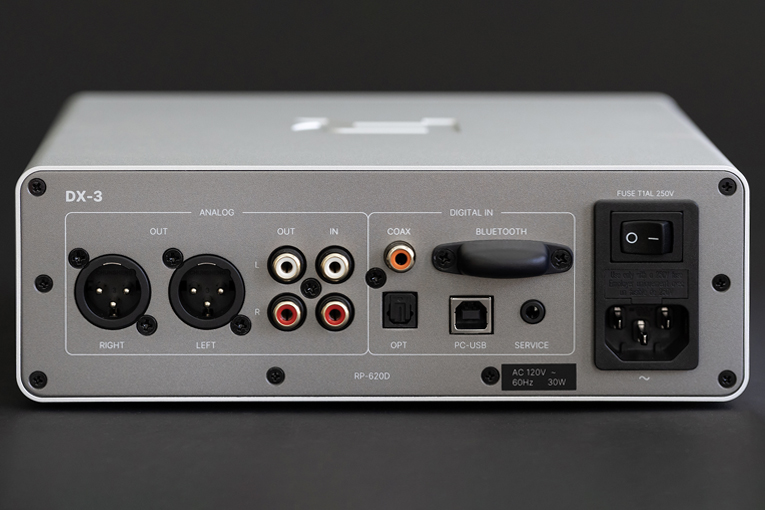Sound: 









Value: 









(Read about our ratings)
Here’s a hot take: how a headphone amp looks is really important. Of course it’s important for it to sound good, but this is something that’s going to sit on a desk or visible shelf and, for a certain type of person, draw attention. So it needs to look good. To be fair, “good” is a pretty broad description. It can be something like the cyberpunk-cool HiBy FD5 or the more conventionally cool Rotel DX-3 ($1499, CA$2249, £1399, €1499, as of May 30, 2025). With just some simple lines and angles, it’s attractive without being flashy.
Inside, there’s plenty to back up the looks. An ESS Sabre ES9028PRO DAC converts your audio from USB, coax, optical, or from your phone via aptX HD Bluetooth. There are even balanced (XLR) and unbalanced (RCA) analog line-level inputs and outputs.

This is an amp, of course, and how well it powers your headphones is vital. Rotel claims 765mW into 16 ohms and 41mW into 300 ohms for the unbalanced 6.35mm (¼″) output. For the 4.4mm balanced output, it claims 2.8W into 16 ohms and 150mW into 300 ohms. Those are solid numbers all around. We’ll see how they translate into real-world listening.
Oh, and Rotel also sells the DX-5, which looks almost identical to the DX-3. The difference is it’s designed to power speakers instead of headphones.
In the box
Included with the DX-3 is a remote, which is certainly handy when the amp is beyond arm’s reach. It’s a lovely aluminum that matches the aesthetic of the DX-3 itself. I wouldn’t be surprised if it costs more to build than some of the headphones I’ve reviewed. You also get a USB-A-to-USB-B (the square-ish one) cable, a power cable, and a USB thumb drive. This contains an owner’s manual and USB drivers in case your computer doesn’t recognize the DX-3. These are the same as those available on Rotel’s website.

Use
Physically, the DX-3 is a beauty. The brushed-aluminum finish looks respectably high-end, the knurled volume knob has satisfying little detents for each step as you turn it, and the screen is bright and sharp. Every part has the precision that you’d expect from a $1500 product.
The DX-3 connected to my computer and started working immediately. That’s usually the case, but not always. There were two minor issues right off the bat. First, every time you turn it on, either from the main switch in the back or the power button on the front, it first enters Language Setup, requiring you to choose your preferred language. A workaround is to use the remote, enter the settings menu, change the language to something else and then back, and then it seems to stick and no longer asks on startup.

The second issue is more of a design choice, but it’s different from how other USB DACs I’ve used worked, so it’s worth mentioning. With its factory settings, it doesn’t “handshake” with your computer automatically. Even if you leave it in PC-USB mode, your computer doesn’t know it’s there until you cycle through the inputs and get back to PC-USB again. The fix is to grab that fancy remote, navigate to the Audio part of the settings menu, and set Signal Sense to PC-USB. I can understand why Rotel did it this way, since with all the DX-3’s inputs, it’s possible you have a preferred source that’s not your computer. But in 2025, I have to assume the majority of people are using this as a USB DAC connected to a computer. Then again, what do I know? Maybe everyone’s connecting their cassette decks, and I missed the memo. Either way, it’s easy enough to change.
Sound
I lined up some heavy hitters to test out the DX-3, including the Audeze LCD-3, Beyerdynamic DT 1990 MkII, and Sendy Audio Aiva 2 (review in process).
I started with the DT 1990 MkIIs, as they have a wonderfully neutral sound, and the bouncy J-pop “あいっ!” by Haku (single, 24-bit/96kHz FLAC, Space Shower Music / Qobuz). The hard-panned guitars sounded clean and detailed, even at high volumes. The cymbals were crisp with no coloration. The DT 1990 MkIIs aren’t particularly hard to drive, and the DX-3 had no problem driving them well beyond a safe listening level. Though this isn’t related to the review, I discovered this band, like most in the West, from the viral video of their cover of a song of Japanese tongue twisters that’s quite the earworm.

To get the DX-3 driving something a bit more difficult, I swapped in the LCD-3s. A friend of mine’s favorite musician is her hometown hero Sam Fender. When I first heard his latest album, People Watching (24/96 FLAC, Polydor Records / Qobuz), my immediate thought was that it sounded like a new The War on Drugs album. Well, yeah—it turns out that WoD’s Adam Granduciel produced it. The title track has a lush combination of guitars, piano, synths, drums, and even saxophone. It’s the kind of track to play loud, and the DX-3s obliged. Even at extremely high, unsafe volumes, the Rotel kept the LCD-3s well controlled. At maximum volume, I couldn’t leave them on my ears. Sitting on my desk, they were so loud you could listen to them like desktop speakers. I don’t recommend this. Amazingly, there was still plenty of bass at that level.
For something a bit heavier and bassier, next up was the Chemical Brothers’ “Block Rockin’ Beats” (Dig Your Own Hole, 16/44.1 FLAC, Virgin / Qobuz). The DX-3 again powered the LCD-3s with ease, maintaining the low drum sounds and still having the immediate attack that the LCD-3s’ planar-magnetic drivers can do so well.

The Sendy Audio Aiva 2s are also planar magnetic, and come stock with a cable that ends in a 4.4mm connector. I stuck with the Chemical Brothers, playing “Galvanize” from 2005’s Push the Button (16/44.1 FLAC, Virgin Records / Qobuz). The Aiva 2s are a little easier to drive than the LCD-3s, and they have a less bass-heavy sound. The synth hits and drums on this track had well-controlled transients. No surprise after hearing the DX-3 drive the LCD-3s: it could power the Aiva 2s effortlessly. What was interesting was that it was easily able to power both of them at the same time. So if you and your partner want to rock out to the same song using two pairs of big planar-magnetic headphones, the DX-3 didn’t seem to break a sweat. It was barely warm to the touch.
Conclusion
For most people, something like the Schiit Magni ($119) is all they’ll need in a DAC–amp. It sounds good and has enough power for most headphones. Something a bit more elaborate, like the HiFiMan EF400 ($529), offers more power and something that looks a little better on a desk. The design and build quality of the Rotel DX-3 easily blows them away, of course, as it should for its much higher price. It feels and sounds every bit of the piece of high-end audio gear it is. It has enough power to drive just about any headphones well above safe listening levels, and it looks gorgeous doing it. I wish it were a bit cheaper, but then, isn’t that true of most things?
. . . Geoffrey Morrison
Associated Equipment
- PC: iBuyPower Windows 10
- DAC/headphone amplifier: HiFiMan EF400
- Headphones: Audeze LCD-3, Beyerdynamic DT 1990 MkII, Sendy Audio Aiva 2
Rotel DX-3 Headphone Amplifier–DAC
Price: $1499, CA$2249, £1399, €1499
Warranty: Five years, parts and labor
Rotel
9719 FM 2920
Tomball, TX 77375
Phone: (346) 396-3743
Email:
Website: www.rotel.com





